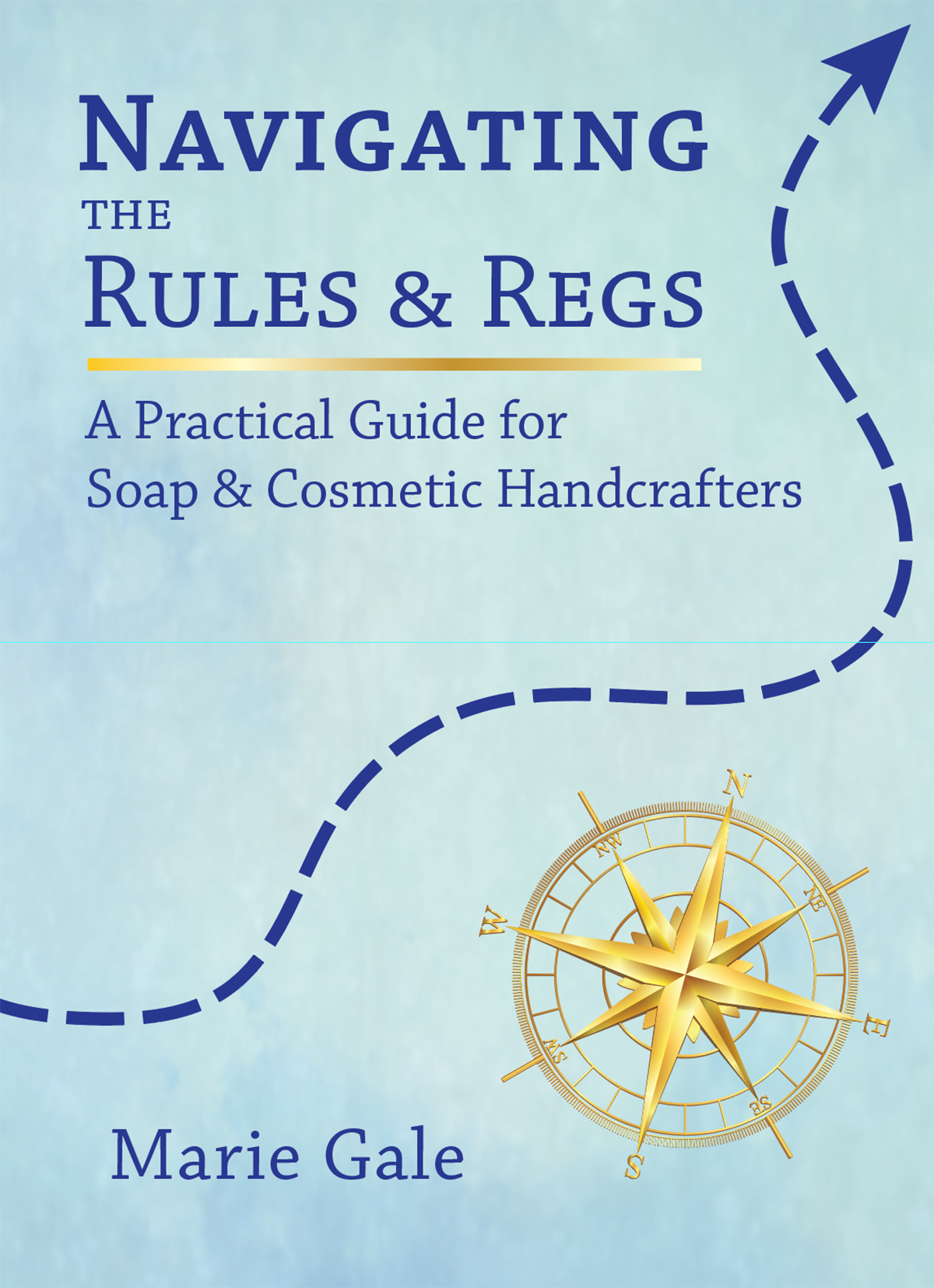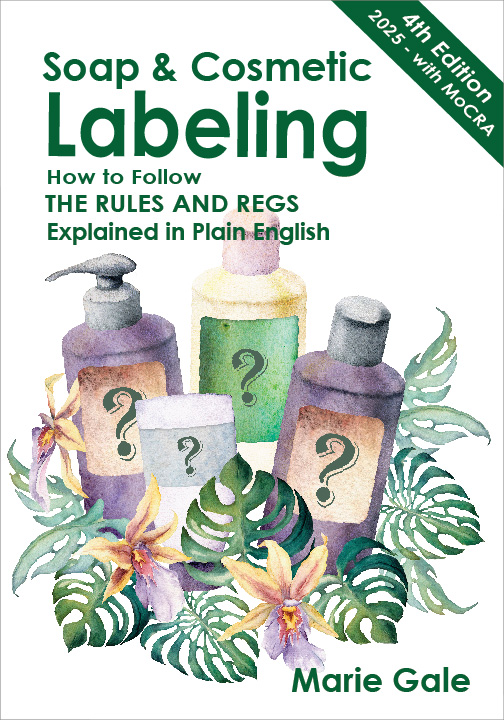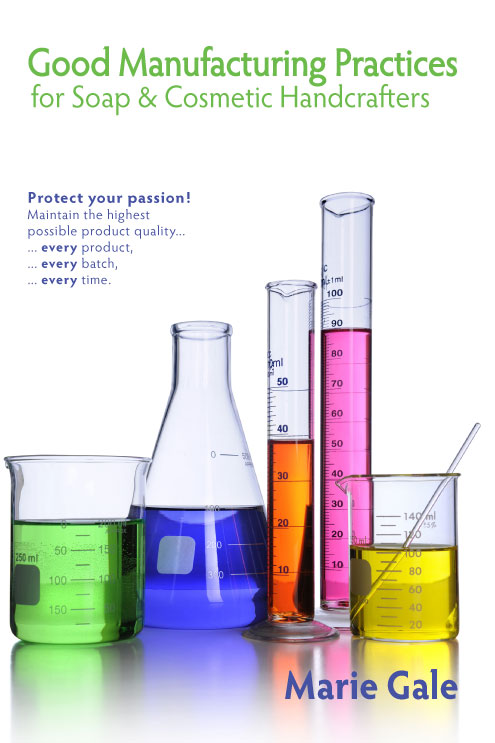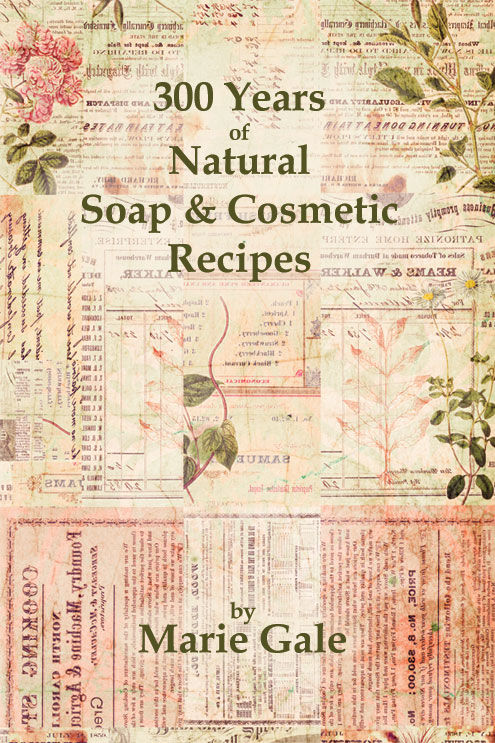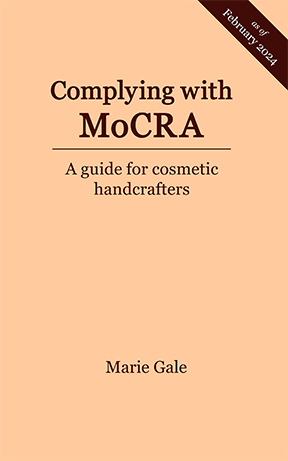
Hi, I’m Marie Gale.
For over 15 years I’ve been researching and following the world of laws, regulations, standards and guidelines for the handcrafted soap and cosmetic industry. What started as a personal quest to understand soap and cosmetic labeling for my own products has grown into a deep understanding of the myriad of requirements that handcrafted soap and cosmetics makers are subject to.
My personal passion to assist others to understand and follow the labeling and other requirements grew out of all that research. If I had my way, no handcrafter would ever experience the stress and heartache of unwittingly running afoul of the the laws and regulations.
There is peace of mind in knowing that you are compliant with the applicable regulations. I’m here to help you achieve that stress-free relationship with your products and your business.
Whether you know it or not, you’ve been an invaluable resource for me throughout our years in business as I’ve relied on your many books whenever I have questions. I’ve recently purchased “Navigating the Rules & Regulations” and am going through it with tabs & a highlighter and am learning more than I ever expected. — Julia
Latest blog articles
-

A Reverse Look at Product Claims
Wondering why you can’t say more about what your product will DO? Let’s take a look at what the FDA has to deal with. Viagra in honey? Yep.
-

For Comparison – Turkey
Ever wondered what the cosmetic regulations are in a country outside the US, Canada and the EU? Let’s take a look at Turkey.
-

Public Opinion on Cosmetic Safety
As part of a course I’m doing, I asked about 40 random people, “Do you think cosmetics are safer now than they were 25 years ago?” YIKES was I surprised by the answers!
-
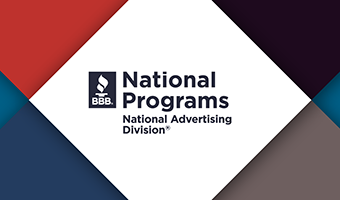
BBB National Programs – Advertising
Did you know the Better Business Bureau has National Programs? Of particular note are the Advertising Initiatives, which provide a forum for “promoting truthful, transparent, responsible advertising through self-regulation, monitoring, and enforcement.”
-

Cosmetics That Look Like Food
Soap that looks and smells like pie. Bath bombs that look and smell like candy. Fun to do and sell – but is there a legal downside? Turns out, at least the the EU, there is.
-
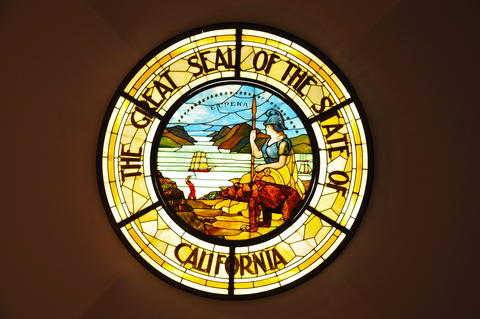
California Legislation – Microplastics
In February 2022, California Assemblymember Bill Quirk introduced Assembly Bill (A.B.) 2787 “Microplastics in Products.” It covers both rinse-off and leave-on cosmetic products.
-

Cosmetic Regulation Update
On May 17, the Senate HELP (Health, Education, Labor, and Pensions) Committee introduced a draft bill which includes changes to the Food Drug and Cosmetic Act regarding cosmetics.
-
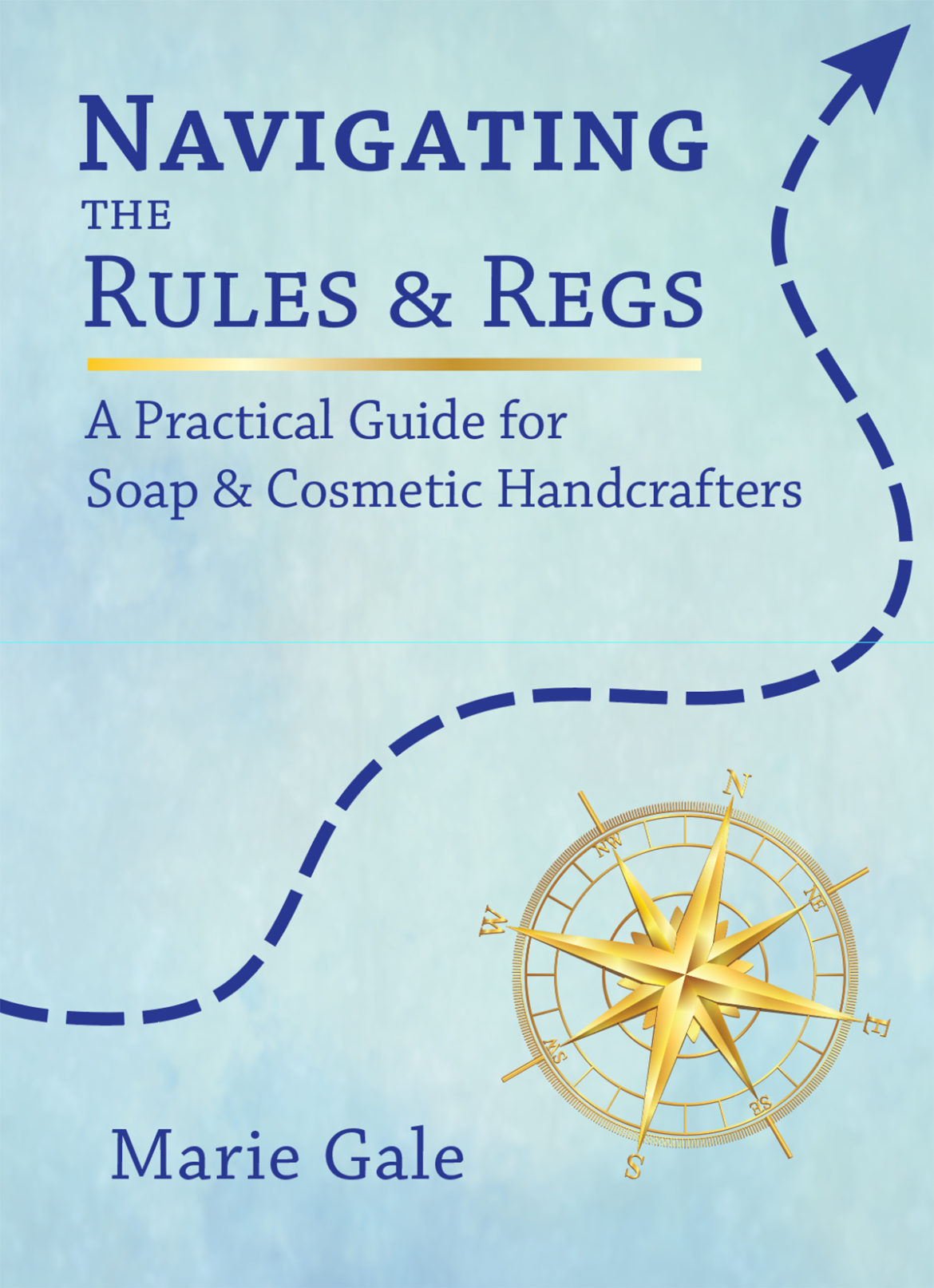
New Book! Navigating the Rules & Regs
New book! Navigating the Rules and Regs is finished and available at Amazon!
-
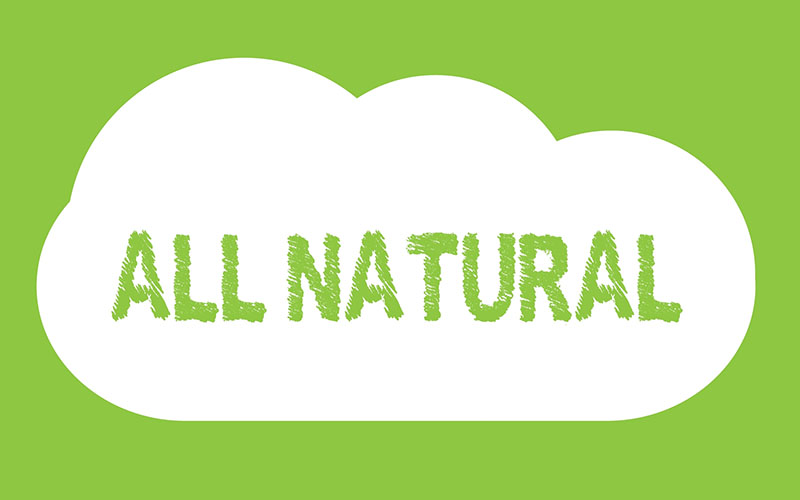
Natural Ingredients and Products
As of now (2022) the FDA has declined to provide a formal regulatory definition of the term “natural” as applied to cosmetics (or food). That said, there are some standards that can guide you concerning when the claim of “natural” is appropriate (that is, not false or deceptive) for a cosmetic product. FDA – Food
-

Parabens in Cosmetic Preservatives
Parabens are a class of preservatives including methylparaben, propylparaben, butylparaben and ethylparaben (and 17 more). These are commonly used preservatives which form the basis of several commercial preservative blends, including Germaben(TM) II and Liquapar(TM). Paraben Safety Parabens have been used in cosmetic (and other) products for over 100 years. However, there have recently been safety
-

Plastic Microbeads
Plastic microbeads are prohibited for use in rinse-off cosmetics. If a rinse-off cosmetic contains plastic microbeads, it is adulterated (and therefore illegal).1 Key Words to Know Pastic Microbead: Any solid plastic particle that is less than 5 millimeters in size and is intended to be used to exfoliate or cleanse the human body or any
-
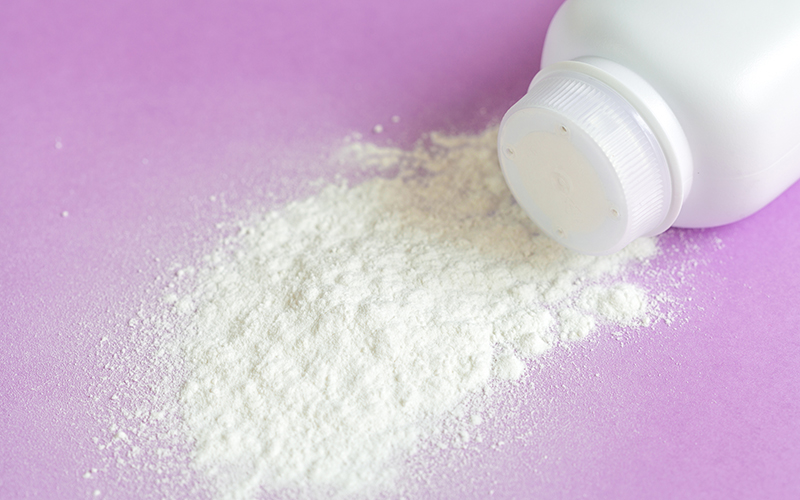
Talc
As an ingredient in cosmetics, talc has been under scrutiny for some years now. I’ve recently done a survey of the current information about talc, and here’s what I found out. Talc was originally used as “talcum powder”—the original body or baby powder. Now it has many uses in cosmetics and other personal care products;
MORE RESOURCES
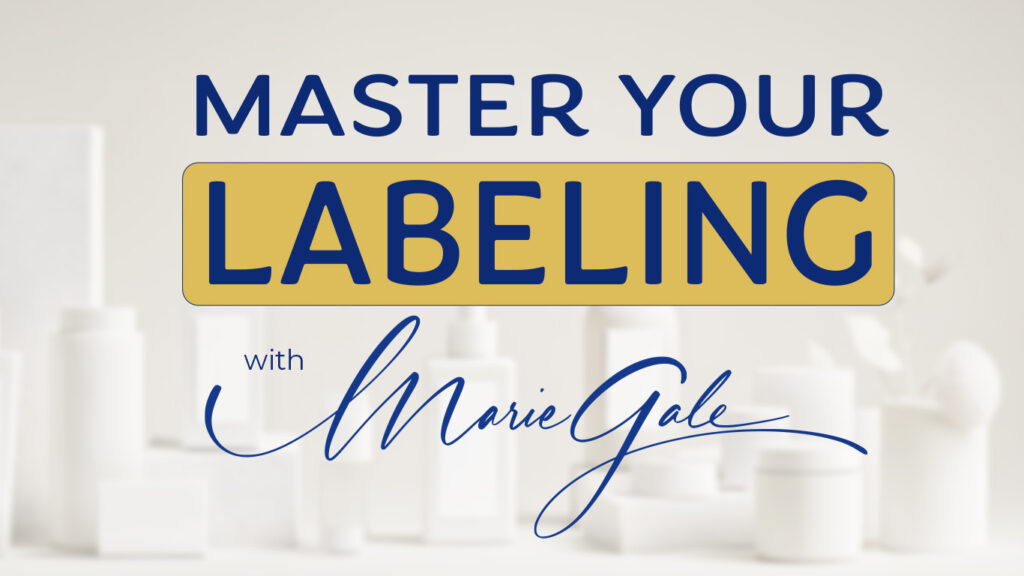
Membership
$37 per month
Affordable and easily accessible ongoing support through courses, coaching, regularly scheduled Zoom Q + A sessions, a private Facebook group, and more. You don’t just learn what the rules are—you learn how to apply them to your business and get help when and how you need it.
Label Review
$125 per label
If you want another set of (experienced) eyes on your label to make sure it meets all the requirements, a label review is a good choice. A label review checks your label against the pertinent regulations. You get a checklist showing if corrections are needed (or not), along with documentation to help you understand the requirements. Label reviews take about a week. Once your review is complete, you can send me the revised label and I’ll take a look to make sure everything is in order.
I wanted my labels to be as close to compliant as I could get them. I took advantage of your label review service and can’t thank you enough for your expert advice. It was money well spent! — N.M.
Consulting
$100 – $150 per hour
Consulting is the tailor-made solution to address whatever your concerns are with your labeling, GMP, MoCRA compliance, safety substantiation, and the like. Consulting can be as simple as just answering the questions you have by email, phone or online meeting, or it can cover reviewing all your labels, ingredient declarations, website copy, safety substantiation documentation, and good manufacturing practices. It’s your call – I’m here to help with what you need.
I speak on behalf of the entire team that we are all very appreciative of your work in helping us grow our brand. It is a big step for us, and you have been instrumental in making that a reality. Thank you for your help. — D.C..
Books
